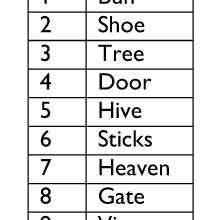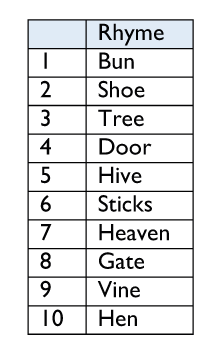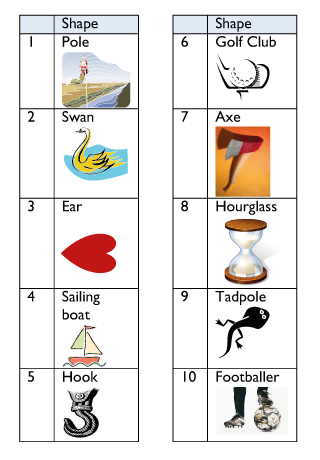
|
Archive - Exams: Preparing and Revising |
Memory techniques
Mnemonics
Mnemonics are strategies for remembering information. The following pages demonstrate mnemonic techniques that can help you memorise content.
It is important to create your own associations and visualisations because they will make sense to you and your brain.
Avoid overusing these techniques as you may find they get confusing and remember it is important to understand material, not just remember it.

Association
Use your imagination to create links between objects or a series of events.
For example, if you were trying to remember Eysenck’s three personality dimensions (extraversion, neuroticism and psychoticism), you could imagine a man named Eysenck interacting with three different people displaying extraverted, neurotic and psychotic behaviour. What would these types of behaviours look like? Do you know someone who displays these types of behaviours?
Association could be useful for remembering a sequence of events, the names of investigators and their studies, or a sequence of different theorists and any conflicting ideas.

 Try it
Try it
Look over your study notes. Find a piece of information or a concept or theory that you can make up an association or a story for.
Method of loci
This method associates a list of objects with a familiar place, such as your house or local area. Memorise several distinct locations as you walk through a familiar place. For example, if you were walking through the University, you might walk through the Kate Edger Information Commons. You might memorise the entrance, outside the Munchie Mart, the stairwell to the Medical Centre and the bus timetable stand.
 |
| Now imagine you have a list of things you need to buy for a party: balloons, cake, party hats and drinks. Imagine each object at one of the memorised locations. When you are in the supermarket you can recall the objects by walking through your familar place in your mind. |
 |
 Try it
Try it
Memorise five locations (eg, in your house, around the university) and imagine each of the following objects in these different locations.
- sunflower
- camera
- balloons
- umbrella
- basketball
Go to your notes. Is there anything you need to learn that you could apply the “Method of loci” technique to?
Pegwords
With this system, you need to memorise a set of objects in order. You can remember the set of objects by rhyming them with numbers (eg, bun for one, shoe for two, tree for three) or associating the number with a similar shape (eg, pole for one, swan for two, double chin for three).
Next associate each object with an item from the list you are trying to remember.
For example, if you were trying to remember the following list of groceries: butter, soup, pasta, pears and cat food: you might imagine spreading butter on a bun, a shoe full of soup, a tree made of pasta leaves, a door painted with pears and a cat sitting next to a beehive eating honey.
|
Rhymes |
Shapes |
 Try it
Try it
Try it for yourself with the following list using either the Rhyme or Shape list.
- toothpaste
- corn
- coffee
- biscuits
- cheese
Now go to your notes. Are then any lists or groups of words that you need to remember? Write down the words and then associate them with one of the lists.
Stories
Create a story to remember a sequence of events.
For example, to remember the order of the planets:
The hot sun shines so brightly it breaks a thermometer and all the Mercury spills out. This runs outside the house where a beautiful woman Venus is standing on the Earth. It keeps running over the earth into the next door neighbour's garden. A war-like neighbour, Mars appears and starts hurling abuse. Just then a smiling Giant appears – Jupiter – and on his superhuman type chest he has the words SUN for Saturn, Uranus and Neptune.

Acronyms
An acronym uses the first letter of each word to form a new word.
For example, to remember the four voices in a quartet:

Acrostics
Acrostics use the first letter of the words to be remembered as the first letter of the words in an easy to remember sentence.
For example, the first nine elements in the periodic table:








